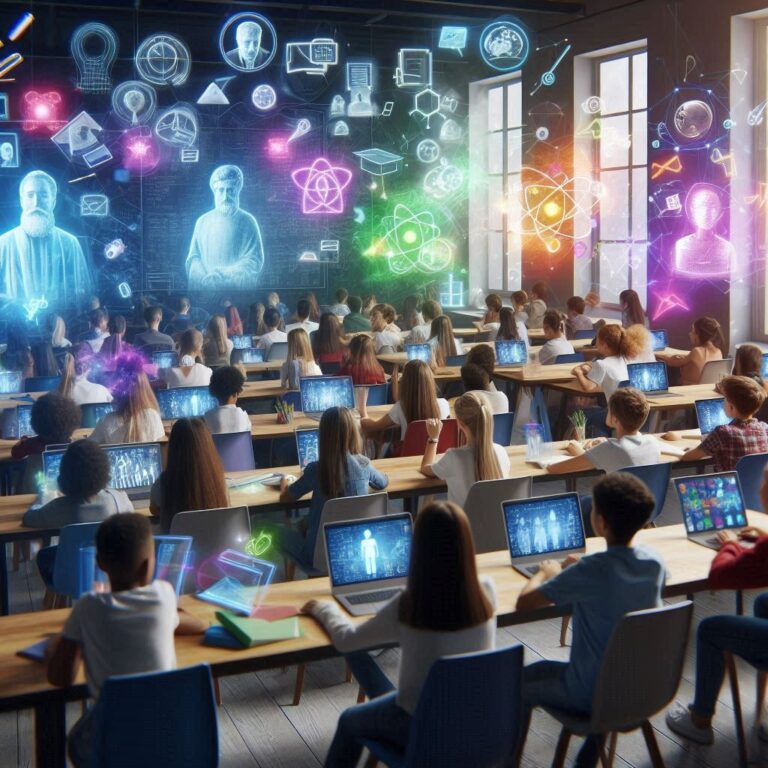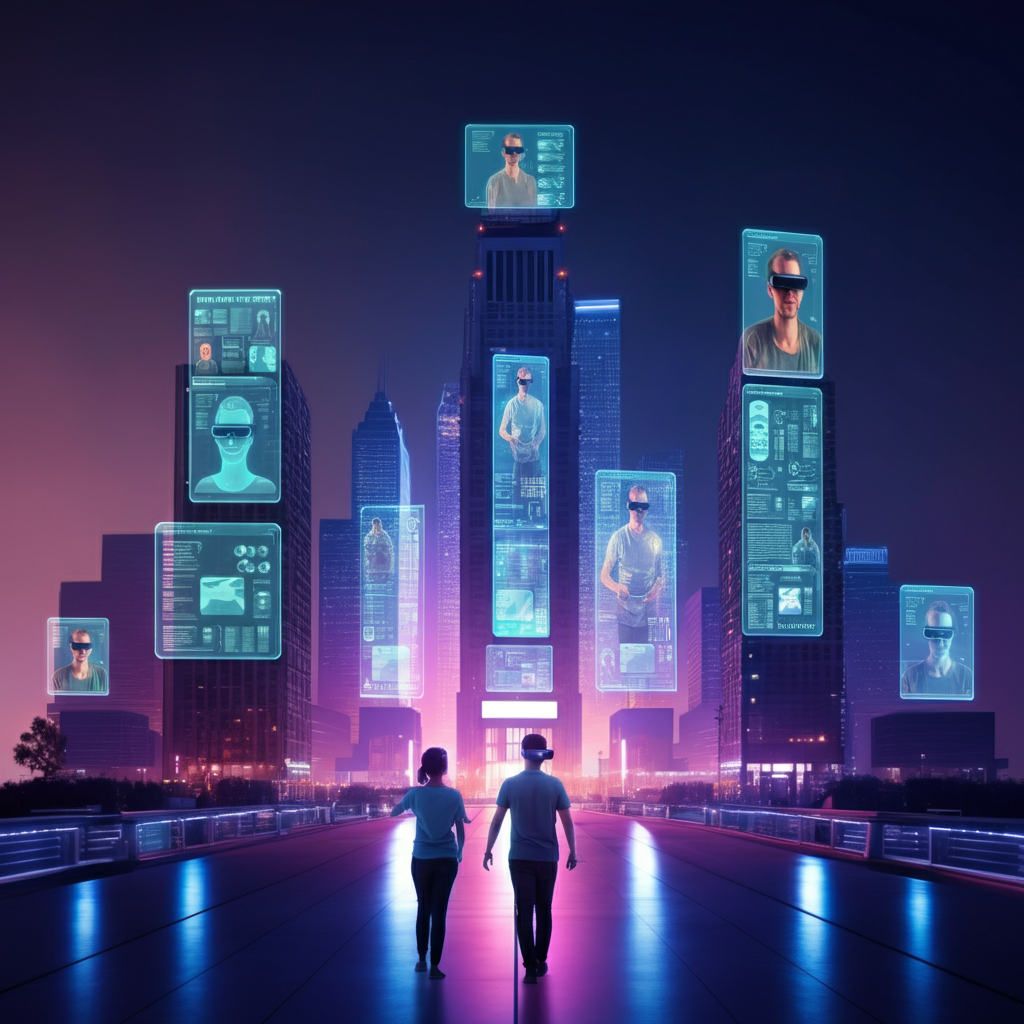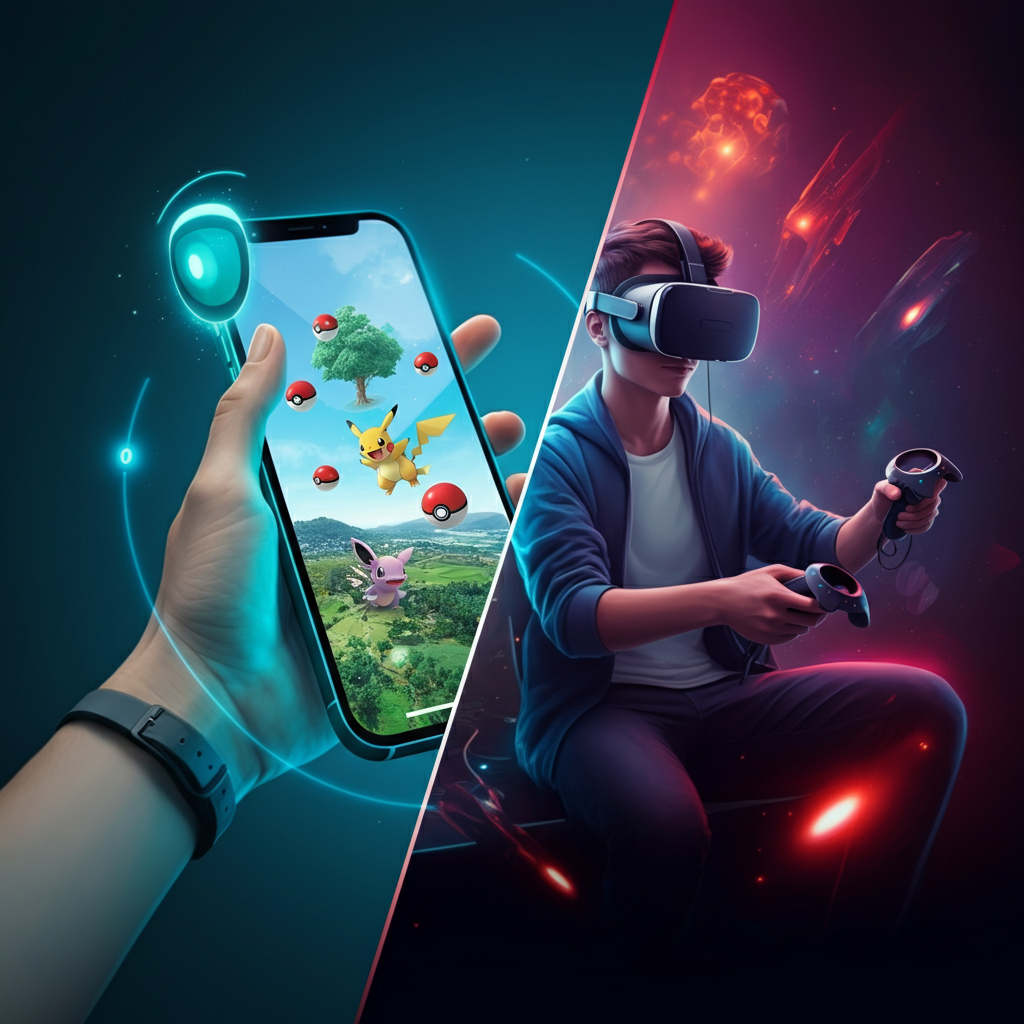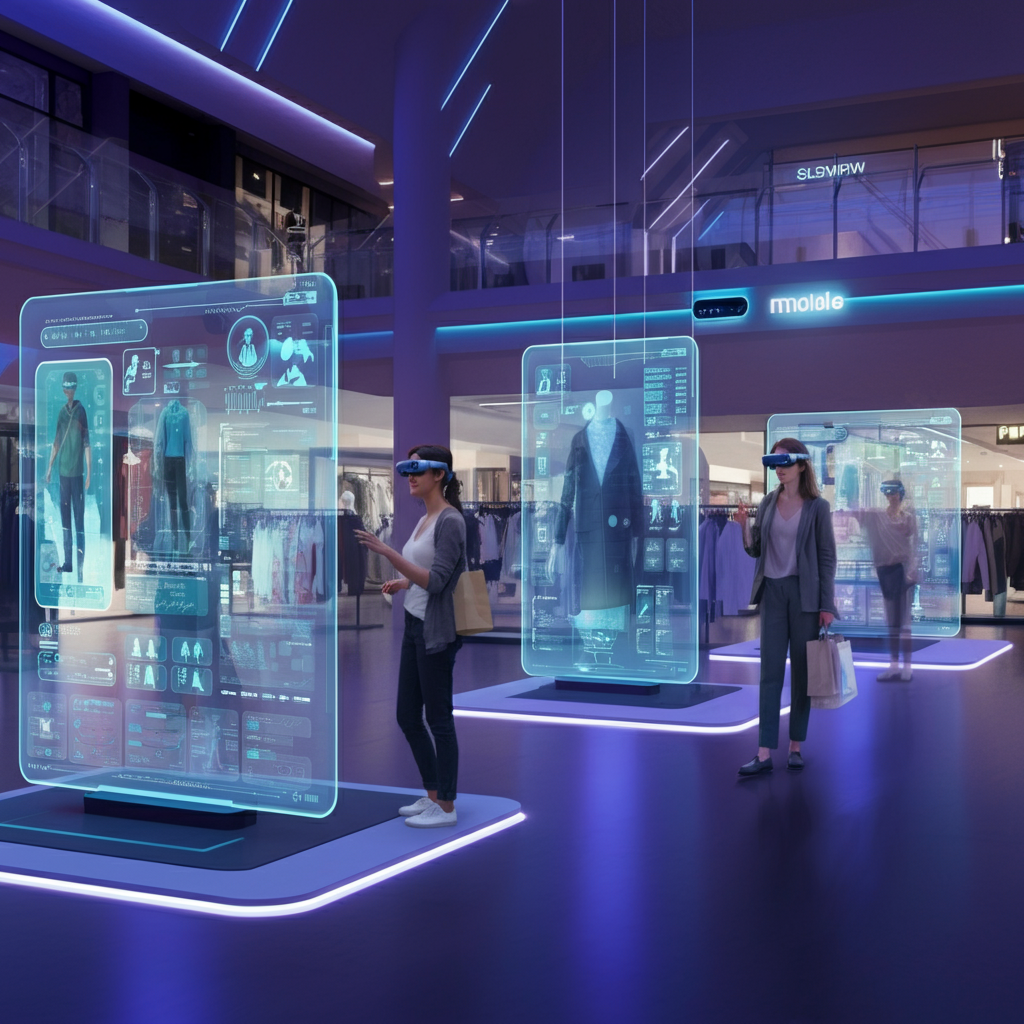AR in Education: Imagine your pupils exploring the solar system from their desks, dissecting virtual frogs without mess, or bringing historical artefacts to life on a smartphone. This is AR’s power in education. By 2025, the worldwide EdTech industry will approach $400 billion, and AR will fuel this expansion.
But how does AR affect learning? How can educators and institutions implement it well? This book will demonstrate the advantages, practical applications, and insights of adopting AR to transform education for educators, EdTech enthusiasts, and school decision-makers.
Augmented Reality (AR) is revolutionizing education in the United States, bringing immersive and interactive learning experiences into classrooms across the country. This cutting-edge technology bridges the gap between theoretical concepts and real-world applications by allowing students to explore, interact with, and visualize complex subjects in entirely new ways. Whether it’s dissecting a virtual frog, exploring historical landmarks through 3D holograms, or grasping intricate scientific theories, AR is making education more engaging and accessible. With its potential to cater to various learning styles and needs, AR is quickly becoming a pivotal tool in reshaping how educators teach and how students comprehend critical topics.
What’s augmented reality in education?
Augmented reality adds visuals, animations, and 3D models to the actual environment in real time. VR immerses viewers in a digital universe, but AR lets them interact with the digital overlay in the real world.
An AR program may display a 3D solar system model on a desk. While in class, students may zoom in, engage, and mimic planet motions.
Students see and study their studies in new ways because to this seamless integration of the digital and real worlds.

10 Ways to Integrate AR in Classrooms
Integrating Augmented Reality (AR) in education is not just a technological trend—it’s a transformative tool reshaping the way students learn and teachers teach. Here are ten impactful ways AR is revolutionising classrooms and creating immersive learning experiences for the next generation.
1. Bringing Abstract Concepts to Life
AR allows students to visualize complex subjects like the human anatomy, the solar system, or molecular structures in 3D. These interactive models make learning more engaging and easier to understand.
2. Enhancing Engagement and Participation
Interactive AR applications capture students’ attention by making lessons more dynamic and enjoyable. This increased engagement leads to better retention and active participation in class.
3. Personalized Learning Experiences
AR empowers students to learn at their own pace by offering customized content tailored to individual needs. It accommodates different learning styles, whether visual, auditory, or kinesthetic.
4. Gamifying the Learning Process
AR-driven educational games transform traditional lessons into exciting challenges. For instance, scavenger hunts using AR apps can make subjects like history or geography far more captivating.
5. Real-World Simulations
From virtual science experiments to historical reenactments, AR offers risk-free simulations that allow students to explore and experiment without real-world consequences.
6. Breaking Geographical Barriers
AR enables virtual field trips to historical landmarks, museums, or even space, providing students with opportunities they might never have otherwise. Imagine exploring ancient Egypt without leaving the classroom!
7. Supporting Special Needs Education
AR tools are particularly effective in helping students with learning disabilities. Apps designed for speech therapy, motor skills development, and sensory learning can provide targeted support in inclusive classrooms.
8. Encouraging Collaborative Learning
AR fosters teamwork through group activities, such as building projects in augmented environments or solving puzzles together. This encourages collaboration and strengthens interpersonal skills.
9. Preparing Students for Future Careers
With AR technology becoming prominent in industries like healthcare, architecture, and engineering, students get early exposure to tools they may use in their future careers.
10. Making Learning Fun and Memorable
By combining education with entertainment, AR transforms learning into an enjoyable journey. The immersive experiences leave a lasting impact, helping students retain information more effectively.
Why AR is Growing in Education
Easy Integration
AR works on smartphones and tablets, making it accessible to most schools and students.
Enhanced Engagement
AR in education complements conventional instructional approaches and appeals to digital-savvy pupils.
Integrated Learning
AR fits many learning methods and abilities, so no learner gets left behind.
Benefits of AR in Education
1. Increased Engagement
AR makes learning dynamic and hands-on, unlike traditional teaching methods. AR applications in chemistry may show chemical structures in 3D, letting students interact and learn.
2. Knowledge retention improved
Studies suggest that visual and interactive encounters boost comprehension and recall. Anatomy apps let students study the human body in 3D via AR. Interaction enhances learning and retention.
3. Accessible Options
AR provides high-quality virtual labs at low cost to schools with limited resources. It also provides hearing-impaired pupils with visual cues to make learning more equal.
Real-World AR Learning Applications
- AR in STEM Education: Anatomy applications provide 3D organ and system exploration.
- Engineering students may digitally engage with mechanical prototypes before creating them.
- Historical AR Studies: A virtual Colosseum lets students explore historical artefacts and locations.
- AR applications enhance early childhood learning with exciting features such as animated alphabet cards and interactive storybooks.
- For skill-based training, medical students utilise AR to imitate procedures.
- Engineers simulate product testing before production.
These uses make AR in education essential for many disciplines and ability levels.
Popular Educational AR Apps and Tools
Want to use AR in class? These tools are popular among educators:
Google Expeditions
Virtual field excursions let you visit faraway areas without leaving school.
Quiver
By animating colouring sheets, kids may express their creativity in 3D.
Cube merge
A portable gadget that morphs into 3D models kids may use for science, geometry, and other courses.
These platforms enable AR classroom integration straightforward and entertaining for instructors and students.
AR Adoption Challenges: Common Obstacles

- Device and software costs.
- Insufficient AR educator training.
- Digital gap, where some pupils lack tech resources.
- Realistic Answers
- Apply for government EdTech innovation awards.
- Partner with AR developers for cheap pilots.
- Promote teacher AR integration training.
These problems may be overcome deliberately, maximising AR’s educational potential.
AR Integration Tips for Teachers
- Start Small
- Start with simple AR applications to get used to it.
- Team up with experts
- Discuss cost-effective alternatives with IT or EdTech staff.
- Connect AR to Learning Objectives
- Make sure technology helps educate, not hinders.
- Strategic integration makes AR a useful instructional tool.
The Future of AR Classrooms
Augmented reality is making education more immersive, accessible, and engaging. AR lets children experience STEM, history, and cost-effective tools for impoverished schools in new ways.
AR success depends on smart adoption. Not simply possessing technology, but utilising it to encourage inquiry, expand learning, and offer possibilities for all children.
Take Action Now
Shape the classroom now, not tomorrow. Try AR applications and small projects to explore how AR can change your teaching. To keep up with AR developments, subscribe to our newsletter or get our free guide to incorporate AR into your classroom.
Because the future of education begins today, employ augmented reality to transform learning.





